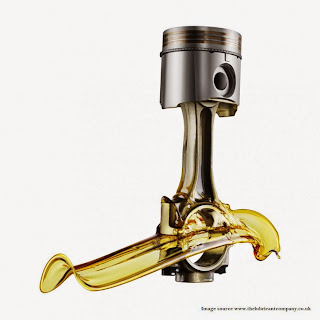Improving Outcomes with Remote Patient Monitoring Systems: Future of Healthcare Technology
Introduction to Remote Patient Monitoring Systems
Remote Patient Monitoring Systems (RPM) is a telemedicine system that enables health care providers to monitor their patients' vital signs, health status, and treatments remotely. RPM systems consist of various types of hardware and software devices, including sensors, cameras, and monitors, that are connected to the patient's home or other remote location. The data collected from these devices is then sent to a remote health care provider, who can use the information to diagnose, treat, and monitor the patient's health.
Remote Patient Monitoring Systems Industry Trends
1.
Growing Use of Wearables: Wearable technology is becoming increasingly
popular among healthcare providers as a way to monitor patient health
and enable remote patient monitoring. Wearable devices such as
smartwatches and fitness trackers are becoming more sophisticated, with
features such as heart rate monitoring, activity tracking, medication
reminders and even fall detection.
2. Growing Demand for
Connected Devices: Connected devices allow healthcare providers to
access patient data from any location. These devices can be used to
monitor vital signs such as blood pressure, heart rate, oxygen
saturation, and body temperature. Connected devices are becoming
increasingly popular as a way to improve patient care, reduce costs, and
improve outcomes.
3. Increasing Use of Cloud-Based Systems:
Cloud-based remote patient monitoring systems are becoming increasingly
popular. These systems allow healthcare providers to access patient data
from any location, reducing the need for in-person visits. Cloud-based
systems also enable healthcare providers to collect and analyze data
more efficiently, providing more insights into patient health.
4.
Growing Focus on Data Security: As remote patient monitoring systems
become more popular, there is an increased focus on data security.
Healthcare providers must ensure that patient data is stored securely
and is not vulnerable to cyber-attacks. Healthcare providers must also
ensure that remote access to patient data is secure and that patient
privacy is not compromised.
Adoption of Remote Patient Monitoring Systems
Remote
patient monitoring systems are becoming increasingly popular in the
healthcare industry, as they have the potential to improve patient
outcomes, reduce costs, and improve the efficiency of care delivery. The
adoption of these systems is being driven by several factors, including
the increasing availability of wireless technology, the decreasing cost
of the systems, and the growing demand for patient-centered care. In
addition, the increasing focus on value-based care is driving healthcare
providers to invest in remote monitoring to better coordinate patient
care and improve outcomes. The use of remote patient monitoring systems
is expected to continue to grow in the coming years, as healthcare
providers seek to improve the quality of care they provide.
The Future of Remote Patient Monitoring Systems in Healthcare
The
future of remote patient monitoring systems in healthcare is bright.
Remote patient monitoring systems offer a range of benefits to both
providers and patients, such as improved patient outcomes, improved
access to healthcare, and cost savings. In the future, these systems are
expected to become even more advanced, with the addition of new
technologies, such as artificial intelligence and machine learning. This
will enable providers to better understand their patients' health and
provide more personalized care. Furthermore, remote patient monitoring
systems are expected to become more affordable, as the cost of
healthcare continues to rise. As a result, more people will be able to
access these systems, leading to improved access to healthcare, better
outcomes, and cost savings.
Remote Patient Monitoring Systems Market Growth
The global remote patient monitoring systems market
growing at a CAGR of 26.7% during the forecast period (2022-2027) and
projected to reach USD 175.2 Billion by 2027 from USD 53.6 Billion in
2022. The increasing prevalence of chronic diseases and the rising
elderly population are the major factors driving the growth of the
market.
The rising demand for home healthcare services and the
growing awareness about the advantages of remote patient monitoring
systems are also expected to drive the growth of the market. In
addition, the increasing investment in healthcare IT infrastructure and
the availability of advanced technologies such as sensors, AI, and cloud
computing are also stimulating the growth of the market.
Related Links
https://www.marketsandmarkets.com/PressReleases/remote-patient-monitoring.asp
https://biz.crast.net/remote-patient-monitoring-rpm-market-to-be-175-2-billion-by-2027/

Comments
Post a Comment